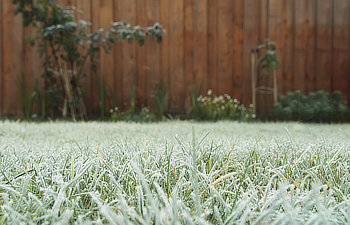
Winter weather can be unpredictable, and a sudden frost or freeze can leave your flowers and plants looking damaged and lifeless. At Pannone’s Lawn Pros & Landscaping, we know how disheartening it can be to see your carefully cultivated garden suffer from freezing temperatures. The good news is that some frozen flowers and plants can be saved with the right care and techniques.
What Happens to Plants During a Freeze?
When temperatures drop below freezing, the water inside plant cells can turn to ice. This damages the cell walls, leaving plants wilted, discolored, or mushy once they thaw. Different plants respond differently to freezing conditions:
- Hardy Perennials: Often survive and recover after a frost due to their resilience and dormant cycles.
- Tender Annuals: More susceptible to damage and may not recover fully.
- Woody Plants and Shrubs: Can often survive but may lose leaves or suffer branch dieback.
Signs That Frozen Plants Can Be Saved
While not all plants can bounce back after a freeze, many show signs of resilience. Look for these indicators:
- Green Stems: If the stems are still green and firm, the plant may recover.
- Flexible Branches: Bend a branch gently; if it bends without snapping, the plant is likely still alive.
- New Growth at the Base: Fresh sprouts near the soil suggest the roots are unharmed.
Steps to Help Frozen Plants Recover
If you suspect your plants have been damaged by frost, follow these steps to give them the best chance of recovery:
- Leave Them Alone Initially
Resist the urge to prune or remove damaged leaves and stems immediately. Cutting plants back too soon can expose them to further cold damage. - Provide Protection
Cover plants with frost cloths, sheets, or burlap during subsequent cold snaps to prevent further injury. - Water Carefully
Hydration is crucial after a freeze. Water plants gently at their base, as it helps thaw the soil and supports root health. - Wait for New Growth
Allow time for the plant to show signs of recovery. New buds or leaves often emerge a few weeks after the freeze. - Prune Dead Material
Once new growth appears, trim away dead or damaged foliage to encourage healthy development. - Apply Mulch
Add a layer of mulch around the base of the plant to insulate roots and retain moisture.
Preventing Frost Damage in the Future
Preparation is key to minimizing frost damage in your garden. Here are some tips to protect your plants before freezing temperatures hit:
- Choose Hardy Plants: Opt for species that are suited to your local climate and can withstand cold weather.
- Cover Early: Keep frost blankets or covers on hand and apply them as soon as frost is in the forecast.
- Water Before Frost: Moist soil retains heat better than dry soil, so watering plants before a freeze can help protect roots.
- Move Potted Plants: Relocate potted plants to a sheltered area, such as a garage or patio, during cold weather.
When to Call in the Professionals
If your landscape has suffered significant frost damage, the experts at Pannone’s Lawn Pros & Landscaping can help. Our team offers professional landscape maintenance and recovery services to restore your yard to its former beauty. Whether it’s assessing frost-damaged plants, replanting, or seasonal preparations, we have the expertise to keep your landscape thriving year-round.
Let Pannone’s Lawn Pros & Landscaping Help
Winter can be tough on your garden, but with proper care and attention, many plants can bounce back after a freeze. If you’re unsure how to revive your landscape or want professional advice, Pannone’s Lawn Pros & Landscaping is here for you.
Contact us today to schedule a consultation and learn more about how we can protect and rejuvenate your yard, no matter the season!
Posted on behalf of
1444 Buford Hwy
Cumming, GA 30041
Phone: (678) 294-0351
Email: pannoneslawnpros@gmail.com
Monday - Saturday 8:00 AM – 6:00 PM
